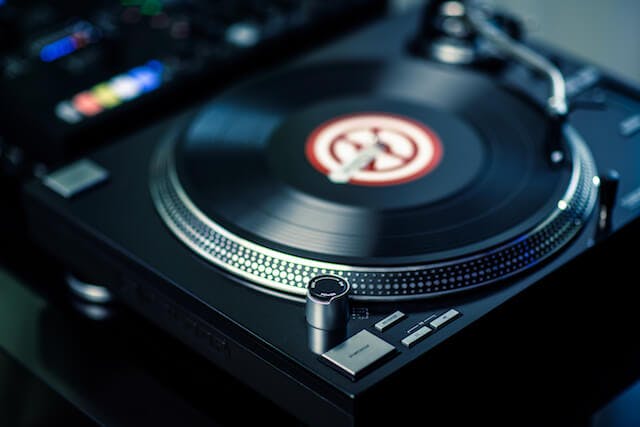Amazon has recently debuted its upgraded Amazon Music HD and Ultra HD Streaming services. Amazon hopes to increase its market share by offering listeners millions of songs at CD quality, or better. The question for many customers may be whether or not they can actually hear the difference between Amazon’s standard streaming quality and the more costly HD streaming options. We are all familiar with the low or variable quality of most audio streaming services, so HD audio promises to provide near-perfect audio. This quality improvement requires more streaming bandwidth, so any user who would like to try out HD audio will need to first verify that their network and phone (or computer) is capable of receiving and playing these high-bitrate audio streams. Further, as explained below, high-bitrate and wide-frequency-response audio may provide subtle audio benefits, or it may be a hollow promise. Amazon and Tidal currently promote 24-bit, high-sample-rate audio, but much of the buzz around this high-resolution movement may just come down to marketing hype.
Understanding the Specs
When comparing streaming services (or any digital audio files), it is important to have some basic understanding of the audio qualities and anomalies to expect from each file type. Also, each streaming service may lower the quality of audio that is delivered to a specific device. Most companies only mention this in their fine print, but streaming quality depends on many factors, including network speed and the specific streaming/playback device.
There are two broad categories of digital audio files: lossy and lossless files. Lossy compression, as used in mp3 and AAC encoding, is the most common and uses data compression to reduce the amount of bandwidth that is needed to serve the audio. This compression discards audio that may be masked by other, more important, audio information. Lossy compression results in very small files that sound approximately like the original source audio. Lossless audio files, such as FLAC and ALAC, reduce the file size by using a kind of digital encoding shorthand, like simplifying (abbreviating) the representation of repeating audio patterns and discarding non-audio data. Lossless encoding results in files that are larger than lossy files, but perhaps half the size of the original file. Lossless files can be decompressed into an identical copy of the original audio data—and will, therefore, sound identical to the original file. In short, lossy formats will never sound as good as an original source file, while lossless files will sound the same as the original file. Both lossless and lossy formats may include metadata, such as artist and song names, artwork and lyrics.
Dynamics and Frequencies
A little background—since the 1980s, the reference standard has been the audio CD, which uses 16-bit, 44.1kHz audio. This format provides 96dB of dynamic range and covers the frequency range of 20Hz – 20kHz— basically matching the range of human hearing. Dynamic range is simply the difference in the volume of the softest to loudest musical moments. The dynamic range of classical music rarely goes beyond 60dB while pop music may have as little as 12dB of dynamic range. Traditional analog audio systems like tape and vinyl provide a maximum of about 70- 80dB of dynamic range. FM radio provides about 50dB.
The HD and Ultra HD formats provide up to 24-bit, 192kHz audio. 24-bit digital audio provides 144dB of dynamic range, though no analog system can reproduce anywhere near that. A sampling rate of 192kHz provides a frequency response that reaches up to over 90kHz, while the human hearing range tops off nearly two octaves below, at about 20kHz. We can see that while HD and Ultra HD formats do provide more audio bandwidth, the 16-bit, 44.1kHz audio CD standard provides both dynamic range and frequency response that surpasses human hearing.
In music production, 24 or 32-bit digital audio is used because more bits provide the opportunity for high-quality, accurate digital signal processing. When a digital audio file is mastered for consumer release, the dynamic range, and frequency response can be reduced by using processes like dither and high-quality sample rate conversion, in order to retain much of the dynamic range and frequency response of the HD original file. While manufacturers can easily build high sample-rate devices, many experts acknowledge that high-definition final masters need not be more than 16-bit, no matter the sample rate of the audio. The important issue to you, as a consumer, is what format sounds best.
What Does Lossy Audio Sound Like?
Humans are sensitive to artifacts, or glitches, in lossy-compressed audio. Typical sonic artifacts of mp3 and AAC encoding include high frequency “chirping,” hollowness or dirtiness in vocals, lack of stereo width or clarity of imaging, smearing of percussive transients, and sometimes even a doubling effect or short echoes on certain sounds. Additionally, extreme low and high frequencies may disappear and distortion can be heard that seem to “ride along” with the music.
Comparing various lossy and lossless formats is sometimes easy but also depends on the program material and the fidelity of your playback system. On your system try to listen for the artifacts mentioned above. Depending on the quality of your playback system, you may or may not hear differences between various formats. FYI, consumer headphones are designed to sound exciting and fun, but they don’t necessarily reproduce audio accurately. Professional audio producers and engineers rely on headphones and monitor systems that provide accurate, flat sound. In order for a consumer to hear what an artist or producer intended, they must use a high-quality, accurate playback system. This includes the streaming device and headphones or speakers.
Improving Your Listening Experience

If you decide to spend the money on HD or Ultra HD audio, there are a few easy ways to improve your listening experience. First, do your due diligence to ensure that you can actually receive and decode the HD or Ultra HD audio—even standard definition streaming quality depends on bandwidth. Second, you can easily improve the sound of your current headphones or monitors with software that corrects the imperfections of those devices. Sonarworks’ True-Fi app and Systemwide software can digitally correct the inaccuracies or your headphones or speakers and provide an accurate listening experience, that will recreate the sound that the artist and producer heard while creating the music. These apps ship with hundreds of consumer headphones already modeled, so the user simply chooses their headphone model and the software processes the audio to provide optimum playback accuracy.
Audio streaming is here to stay and as a smart consumer, it would be wise to understand the basics of streaming audio and how to best enjoy the stream you choose!
Typical streaming data rates:
| Audio Source | Streaming Data Rate | Bit depth and sample rate |
| CD Audio | 1,411kbps (uncompressed digital audio) | 16-bit, 44.1kHz |
| Amazon Music | 320 kbps (lossy) [mobile devices may stream lower quality] | Lossy encoding – variable bitrate |
| Amazon Music HD | 850kbps (lossless) [mobile devices may stream lower quality] | 16-bit, 44.1kHz |
| Amazon Music Ultra HD | 3730kbps (lossless) [mobile devices may stream lower quality] | 24-bit, 44.1kHz – 192kHz |
| Apple Music | 256 kbps (lossy AAC) [mobile devices may stream lower quality] | Lossy encoding – variable bitrate |
| Spotify | 160 kbps (lossy) [mobile devices may stream lower quality] | Lossy encoding – variable bitrate |
| Spotify Premium | 320 kbps (lossy) [mobile devices may stream lower quality] | Lossy encoding – variable bitrate |
| Tidal Premium | 320 kbps (lossy) [mobile devices may stream lower quality] | Lossy encoding – variable bitrate |
| Tidal HiFi | 1411 kbps (lossless) FLAC | 16-bit, 44.1 kHz |
| Tidal Masters | MQA requires external hardware | Up to 24-bit, 96khz |




